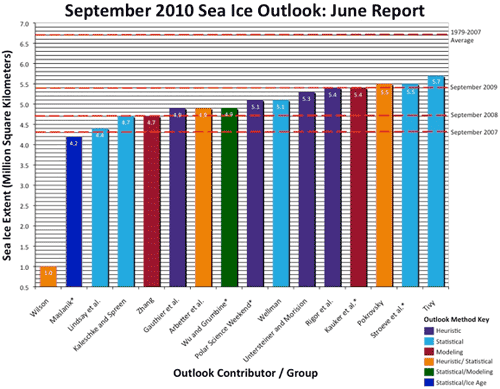Video update on Arctic sea ice in 2010
Posted on 14 September 2010 by John Cook
The latest Crock of the Week from Peter Sinclair, featuring a great overview from NASA's Tom Wagner and a compelling eye-witness account of what's happening to Arctic sea ice from Arctic researcher David Barber.
A gold star for the first reader who spots the Skeptical Science graph :-)































 Arguments
Arguments























 0
0  0
0







Comments